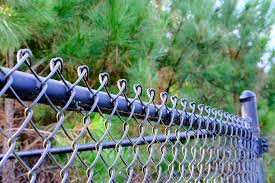Above their useful energy, fences hold powerful symbolic significance in human being societies, which represents principles of management, identity, and interpersonal limitations. As physical manifestations of limitations, fences design our perceptions of place and affect our interaction with the created atmosphere. Let’s explore the symbolic incredible importance of fences (ploty) and understand why they may be not only structures—they are symbols of human tradition and society.
1. Possession and Territory:
fences (ploty) symbolize possession and territorial boundaries, marking where by 1 property finishes and another begins. By understanding restrictions, fences establish a sense of acquisition and power over territory, reinforcing specific or combined personality. In outlying places, fences function as concrete marker pens of territory management, delineating areas, pastures, and residence lines. In city settings, fences demarcate personal residence from public place, asserting acquisition and exclusivity.
2. Sociable Section and Exclusion:
Fences could also represent societal divisions and exclusions within culture. Substantial wall space and obstacles may denote break up and inequality, creating physical limitations that split areas according to socio-economical position or any other variables. Alternatively, fences with open up gateways and low surfaces symbolize inclusivity and link, inviting discussion and encouraging feelings of community. The look and presence of fences reveal underlying social dynamics and strength buildings.
3. Cultural Identification:
In lots of civilizations, fences hold strong societal value and they are imbued with meaning that mirrors ethnic principles and traditions. For example, in some countries, ornate fences are symbols of standing and status, displaying wealth and prosperity. As opposed, in other ethnicities, easy and practical fences may be respected for their usefulness and utilitarianism. Learning the cultural framework of fences helps us value their symbolic value in several societies.
4. Mental health Boundaries:
Fences also can symbolize mental borders that outline private space and autonomy. By creating bodily limitations, fences give people with feelings of protection and security, permitting them to establish borders and management access to their personalized room. This sensation of limit control is essential for maintaining psychological well-becoming and interpersonal relationships, as it permits individuals to assert their autonomy and safeguard their personal boundaries.
5. Environmental Impact:
The proliferation of fences has enviromentally friendly ramifications, especially in normal countryside and animals habitats. Substantial fencing can fragment habitats and affect animals corridors, having an effect on biodiversity and ecosystem wellness. Nevertheless, eco-friendly fencing alternatives, such as wildlife-friendly models and permeable limitations, provide options that stability human demands with environmental preservation. By minimizing their environment footprint, fences can play a role in the preservation of organic countryside and wild animals habitats.
In conclusion, fences are more than simply actual physical structures they can be symbols that symbolize intricate sociable, social, and emotional dynamics. As guardians of borders, fences condition human being interaction and scenery, showing and reinforcing social principles and norms. Admiring the symbolic importance of fences enriches our idea of the built setting and our connection using the land.



